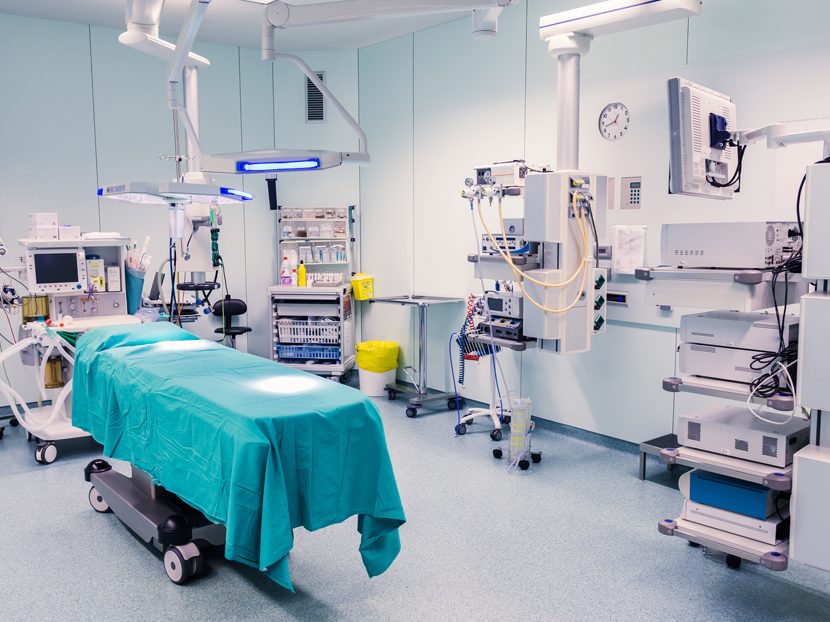Manufactured Assemblies for Hospitals
Make sure to review manufacturers’ testing reports as they will shed light on potential failed final tests.

It’s time to review the shop drawing submittals for a hospital operating room renovation project. Where do we start, what do we look for and what should manufacturers provide?
To start, what is a manufactured assembly? Per 2012 NFPA 99 section 3.3.102 of the definitions, it is a “factory-assembled product designed for aesthetics or convenience that contains medical gas or vacuum outlets, piping, or other devices related to medical gases.”
This definition would include surgical booms with medical gas inlets and outlets, nitrogen control panels, alarm transducers, and wall inlets and outlets, to name a few.
What should a manufactured assembly be tested to? Per 2012 NFPA 99 section 5.1.6.1, which says:
“5.1.6.1 Manufactured assemblies shall be pretested by the manufacturer[KF1] prior to arrival at the installation site in accordance with the following:
“1. Initial blowdown test per 5.1.12.2.2
“2. Initial pressure test per 5.1.12.2.3
“3. Piping purge test per 5.1.12.2.5
“4. Standing pressure test per 5.1.12.2.6 or 5.1.12.2.7, except as permitted under 5.1.6.2”
The underlined verbiage would indicate that the manufacturer must test its assembly in a similar fashion as the installing medical gas contractor does per 5.1.12.2 through 7.
The installing contractor must provide documentation certifying that it performed all the required tests and, per section 5.1.6.1, the manufacturer of the assembly shall offer the same set of documents.
Manufacturer Documentation
In the past, manufacturers would typically rubber-stamp the assembly, saying it meets NFPA 99. So, are we to trust they have completed all the required tests per NFPA 99 section 5.1.6.1? The answer would be “no.”
Let us begin with the most common assembly that has the most issues — the surgical boom. In many cases, it is an articulating arm with hoses and wires inside the enclosure.
There have been instances where the manufacturer used food-grade hoses inside the boom. These same hoses and others they make for the booms are tested, but fail the standing pressure test. This still occurs today.
In one such occurrence, the manufacturer submitted cut sheet information for the submittal process but failed to provide testing documentation. As you can guess, we sent the submittal back as rejected and told the manufacturer it needed to submit all the documentation as required by NFPA 99 section 5.1.6.1.
We then received an email from the manufacturer, stating it is not required to send in testing documentation. We followed up with the code sections that the manufacturer is to abide by, which usually works. We have done this enough times to where the manufacturers are starting to provide this documentation without us having to ask for it all the time.
Recently, I reviewed testing documentation from a prominent surgical boom manufacturer, which showed starting pressures and ending pressures over a two-hour period. The test showed a loss in pressure over that time frame. By all rights, there should be no pressure loss if the hoses were correctly connected and the hose connections were properly made.
However, under NFPA 99 section 5.1.6.2, the code does allow less than 1 percent loss in pressure over a 24-hour time frame. The manufacturer, in this case, was using a two-hour period.
The manufacturer’s report indicated its leak standard starting pressure at 232.73 and ending pressure of 176.27, which equates to a 56.46 psi loss over two hours. This exceeds the permitted loss over 24 hours.
As the manufacturer shows the actual testing and losses, it is showing losses of 18.71 to 24.89 psi over a two-hour time frame. The 1 percent loss should be well under 2.3273 psi, which is permitted to occur in a 24-hour period.
The other part of this test is the pressure used to perform its standing pressure test, which is far greater than the 60 psi required by code. Even if this was the initial pressure test, this exceeds that pressure as well. The manufacturer is permitted some leeway of how to test its equipment, but NFPA 99 should be followed.
In the initial pressure test (most commonly known as the 150-lb. test), the contractor pressurizes the system to 150 psi — long enough for the installer to check each joint for leaks using the soap bubble test.
Testing Failures
So, when these booms are installed and the manufacturer makes its final connections to the boom, the verifier comes in to perform a final test, and the boom fails. Now what?
The manufacturer points the finger at the contractor and vice versa. As designers and engineers, we examine all the verifier’s and contractor’s documentation to determine where the problem may lay. The verifier and contractor have performed their final test on the piping system, which passed, and now they don’t, so how does this happen? This appears to point back to the manufacturer.
Per ISO 5359, hoses have to pass a pressure drop up to 30 feet. Under section 4.4.14 for pressure drop, the following values (at test pressure and test flow) shall not be exceeded:
- Compressed medical gases 25 kPa at a test pressure of 320 kPa and test flow of 40 l/min.
- Vacuum 20 kPa at a test pressure of 60 kPa sub-atmospheric and test flow of 25 l/min.
There are other requirements in the section for nitrogen and air as well; these are just examples.
For those of you who review verifiers’ and contractors’ reports, keep in mind you will want to consider manufacturers’ testing reports as well. They will shed light on potential failed final tests before attempted by the verifier on-site.





